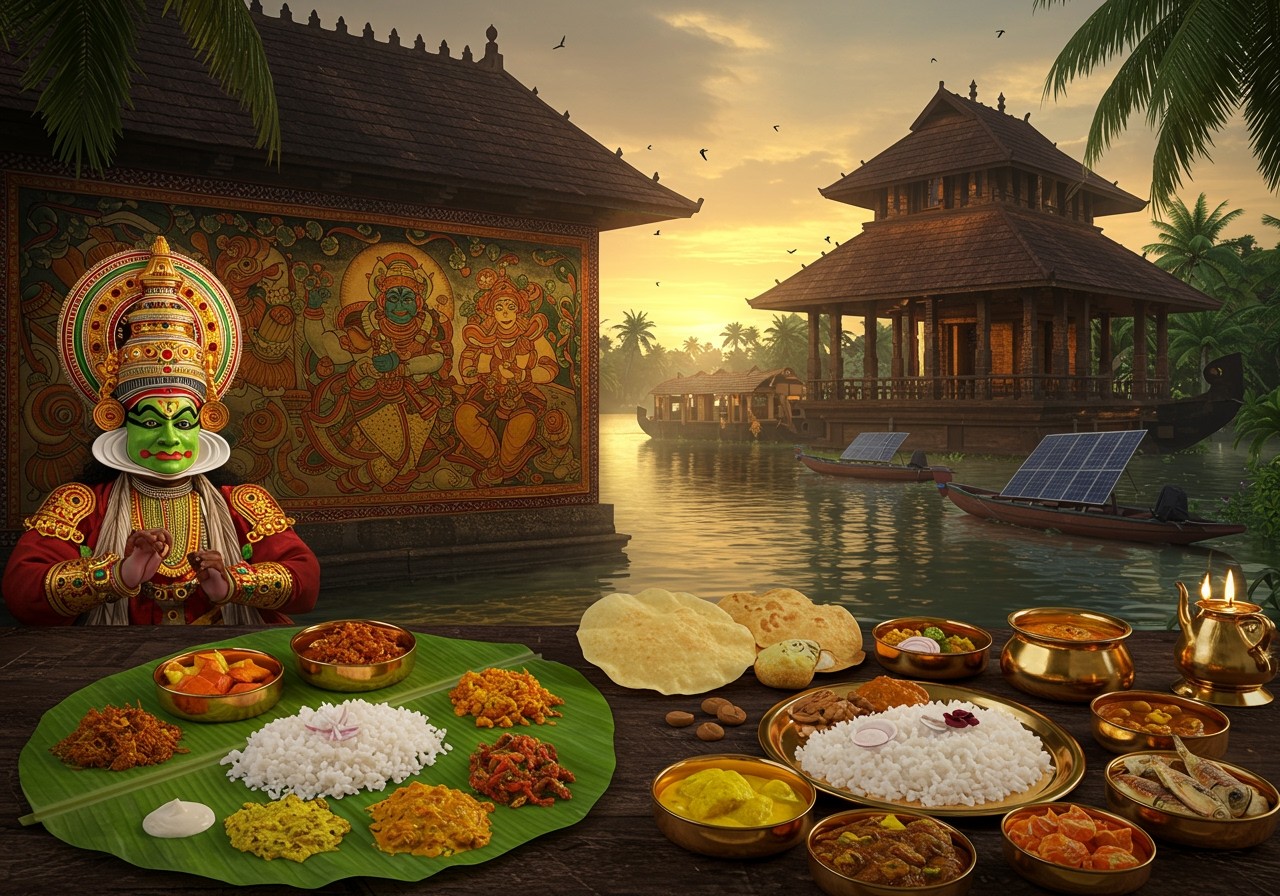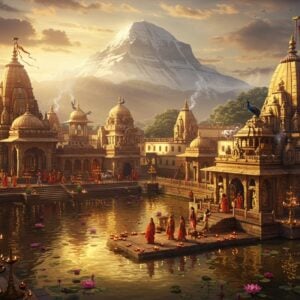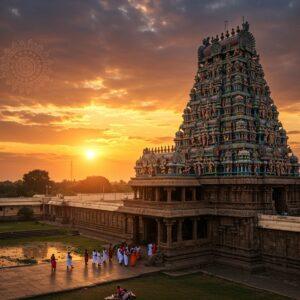
Kerala, fondly called “God’s Own Country,” beckons with a rich cultural heritage waiting to be discovered. As we step into 2025, let’s journey through this vibrant land, exploring its ancient temples, savoring its unique cuisine, and marveling at its captivating art forms. This exploration delves into the heart of Kerala’s traditions, offering a glimpse into the spiritual and artistic essence that defines this beautiful state.
Temple Festivals and Their Cultural Significance
Kerala’s temple festivals are far more than just religious observances; they are grand celebrations of life, community, and cultural heritage. These festivals, like the world-renowned Thrissur Pooram, are a sight to behold, with majestic elephants adorned in vibrant colors and breathtaking fireworks displays. These spectacular events draw people from all corners of the globe, fostering a beautiful exchange of cultures and traditions.
Imagine the rhythmic beats of the Panchavadyam, a traditional Kerala temple music ensemble, filling the air, accompanied by the mesmerizing movements of Kathakali dancers. These artistic expressions enhance the festive spirit, leaving a lasting impression on all who witness them. These festivals bring communities together, bridging divides and reinforcing the bonds that tie people to their heritage. They also play a vital role in supporting local businesses, boosting tourism, and creating economic opportunities. In recent years, there’s been a conscious effort to make these festivals more sustainable, reflecting a growing awareness of environmental responsibility.
For a deeper understanding of Kerala’s temples, you might enjoy reading our blog post about exploring ancient shrines and hidden places in Kerala.
Traditional Kerala Cuisine: A Culinary Journey
Kerala’s cuisine is a delightful blend of flavors and traditions, deeply intertwined with religious practices. The ‘Sadhya,’ a traditional vegetarian feast served on a banana leaf, is a must-try experience. Often prepared for festivals and special occasions, particularly Onam, the Sadhya is more than a meal; it is a ritual, a sensory experience that connects people to their roots and beliefs.
From the fragrant spices to the fresh, local ingredients and time-honored cooking methods, every dish tells a story. The principles of Ayurveda, the ancient Indian system of medicine, influence Kerala’s culinary practices, emphasizing the balance of flavors and the health benefits of the food we consume. Temples often serve ‘prasadam,’ food that has been offered to the deity, strengthening community bonds through the shared experience of partaking in a sacred meal.
While globalization has introduced new culinary trends, there’s a strong movement to preserve the authenticity of traditional Kerala dishes. Interestingly, online platforms now offer traditional Kerala meal kits, making it easier for families to enjoy these time-honored recipes in the comfort of their homes. If you’re interested in learning more about the sacred foods of Kerala, check out our blog on Kerala’s Sattvic cuisine and temple rituals.
Art Forms that Enrich Kerala Temples
Kerala’s temples are not just places of worship; they are living canvases of art and spirituality. Kathakali, a classical dance form with elaborate costumes, expressive makeup, and intricate gestures, narrates stories from Hindu epics and mythology. The vibrant mural paintings adorning the temple walls depict scenes from ancient texts, adding a layer of visual storytelling to the sacred space. The very architecture of Kerala’s temples inspires local artisans, with its intricate carvings and majestic sculptures.
Theyyam, a ritualistic dance form prevalent in northern Kerala, is a captivating blend of art, religion, and folklore. The rhythmic chants of Sopana Sangeetham, traditional temple music, create an atmosphere of devotion and reverence. While contemporary influences are inevitable, there’s a strong commitment to preserving the traditional essence of these art forms, ensuring they continue to inspire and enrich generations to come.
To learn more about the significance of the Aranmula Parthasarathy Temple and its festivals, take a look at our blog post here.
Poojn.in: Your Companion for Kerala Temple Visits and Rituals
At poojn.in, we understand the importance of having the right items for your temple visits and home rituals. We offer a wide range of authentic puja items and traditional products, carefully curated to enhance your spiritual experiences. Whether you need pure coconuts for offerings, a beautifully crafted Kerala-style brass lamp (nilavilakku), high-quality camphor and wicks for aarti, fresh kumkum and chandanam, or a complete puja thali set, we have everything you need.
We also offer specific items for Kerala temple rituals, such as authentic banana leaves for prasad offerings, pure ghee from Kerala for lighting lamps, traditional bell metal vessels, and sacred thread (poonool). For your convenience, we offer kumkum and roli, havan samagri, and even beautifully crafted baran dala sets. You can reach us at 03369029784 or WhatsApp us at 9476142738. All our products are quality-checked and shipped across India with secure packaging. We also welcome bulk orders for temples and cultural institutions. Explore our complete collection at www.poojn.in.
Kerala’s Cultural Heritage in 2025 and Beyond
Kerala’s cultural heritage is a vibrant tapestry woven with threads of tradition and modernity. Its temple festivals, culinary delights, and art forms continue to thrive, connecting people to their roots and inspiring awe in visitors. As we look towards the future, the commitment to preserving these traditions ensures that Kerala’s cultural legacy will continue to shine brightly, offering a unique and enriching experience for generations to come. Whether you’re drawn to its spiritual depth, artistic brilliance, or the warmth of its people, Kerala welcomes you to embrace its timeless charm. For those planning a visit to the Guruvayur Temple, our comprehensive guide here might be helpful.
Kerala Travel and Culture FAQs for 2025
What are some must-visit destinations in Kerala for a cultural experience in 2025? Kerala offers diverse destinations for cultural exploration. Consider visiting Thrissur, known for its vibrant Pooram festival; Kochi, with its historical sites and colonial architecture; or Munnar, famous for its tea gardens and scenic beauty. Don’t miss Alleppey’s serene backwaters, perfect for a relaxing houseboat cruise, or the tranquil beaches of Kovalam. October to March is an ideal time to visit, but the monsoon season (June to September) has its charm, especially for experiencing the lush greenery and Ayurvedic treatments.
Are there specific safety tips for travelers in Kerala? While Kerala is generally safe, it’s wise to take precautions. Respect local customs, dress modestly when visiting temples, and be cautious with food and water. Use reliable transportation, keep emergency contacts handy, and stay updated on weather conditions, especially during the monsoon season. Always carry any necessary medications, and consult your doctor about required vaccinations before your trip.
What are some recommended cultural experiences? Kerala offers a wealth of cultural experiences. Witness a Kathakali performance, visit a local spice garden, take a houseboat cruise on the backwaters, or participate in a traditional cooking class. Consider exploring historical sites like Fort Kochi and Mattancherry Palace, and don’t miss the opportunity to experience a temple festival if your visit coincides with one. Attending a Theyyam ritual, exploring local craft villages, and learning about Ayurveda are also enriching experiences.


